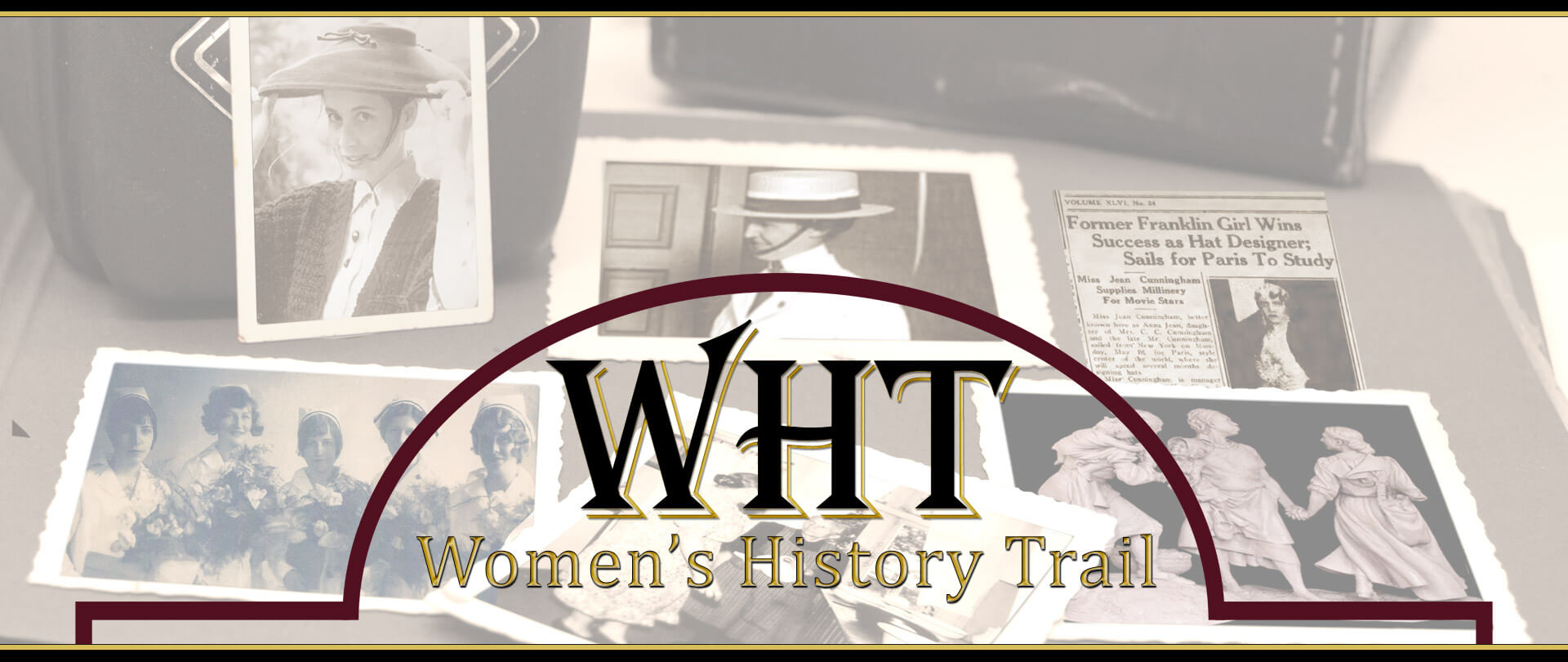
Meet the Women of the History Trail

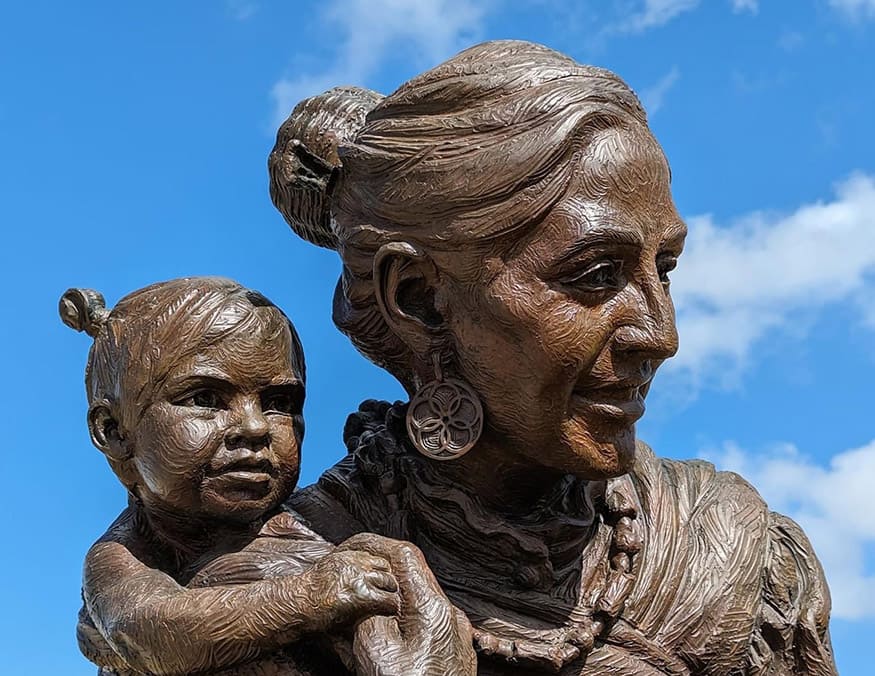
Na-Ka Rebecca Morris (1793-1885)
Na-Ka, a member of an illustrious Cherokee family living in the village of Noquisiyi (Nikwasi), was deeply engaged in efforts to preserve the Cherokee homeland. She was the niece of Yonaguska, a prominent Chief of the Oconaluftee Cherokees who along with his two brothers, Yonaegwa (Big Bear) and Big Tom, purposely selected reserves that contained land of significant cultural value to the Cherokee.
Na-Ka was called by her English name, Rebecca, after she married Baptist minister and farmer, Gideon Morris of South Carolina. Under the Treaty of 1819, she and Gideon obtained, in her right, a preserve of 640 acres along the Little Tennessee River, presently East Franklin. The land bordered the old Nikwasi Village and the Mound to the west. The Morris family was later burned out of their land by white settlers. They pursued compensation from the state of North Carolina and won since they had not willingly abandoned their land. Na-Ka Rebecca and Gideon bought property across the river in the new town of Franklin. Records from 1852 indicate they had moved to Valley River, Cherokee County, North Carolina. Their final move was in 1867, as they traveled with 72 family members to Indian Territory, now known as the state of Oklahoma.
In the sculpture, Na-Ka Rebecca is passing corn seed to a young Timoxena Siler. Her child on her back, is tied in the traditional wrap manner and Na-ka’s attire represents hundreds of years of Cherokee history. The wind carries those traditions over the river and into the future. Listen to the wind, it talks. Listen to the silence, it speaks.
Marker #1 - (Women's History Park)
592 E. Main Street
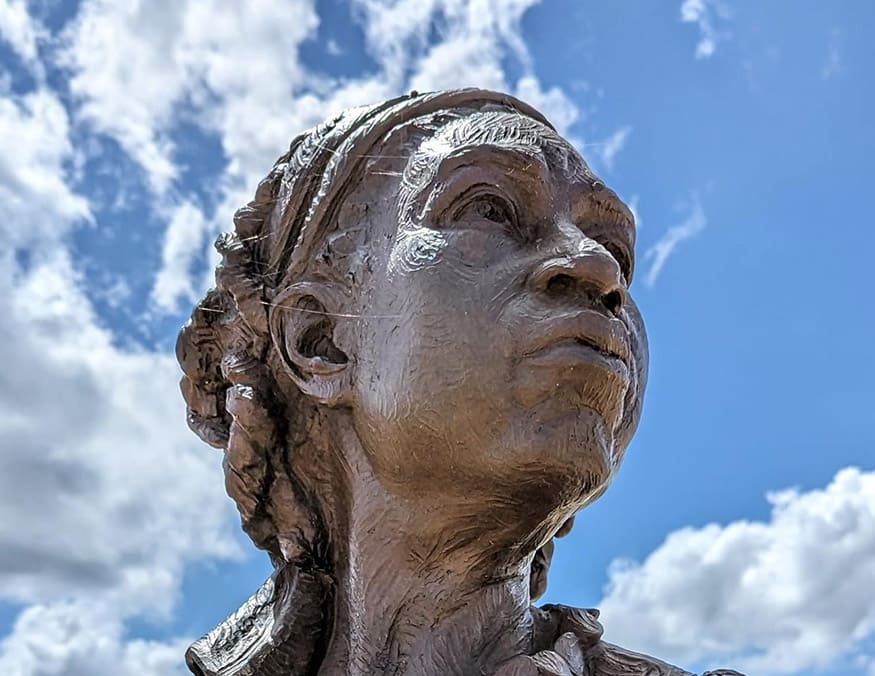
Salley (1799-Unknown)
Standing tall and proud as the central figure in the sculpture is Salley, a skillful woman who very likely spoke both Cherokee and English. She is the bridge between Na-Ka Rebecca and Harriet Timoxena and their common connection with this property by the river. Few historical documents exist to provide factual evidence; however what is known is that she was adept in household skills, including child-rearing, and versed in the many uses of native plants and animal fibers. Her experience working with wool provided her with a source of income later in life.
Salley was born into slavery in about 1799, and although the exact path of her journey is unknown it may have led from Charleston to the Cherokee Village of Noquisiyi (Nikwasi). A character thought to be based on Salley appears in the book Eoneguski or the Cherokee Chief, written by Robert Strange in 1839. Her part in the story reflects her presence in the life of Na-Ka before Gideon Morris and Na-Ka married.
Some years later Salley was sold to Jesse Siler. She brought to the Siler household the domestic skills and acquired knowledge of the land from her years in Nikwasi Village. It is reasonable to assume that she had a hand in raising Jesse’s daughter, Harriet Timoxena. It is also possible that Salley maintained a relationship with the Siler-Sloan family even after she might have attained her freedom. Found among Timoxena’s possessions was a note written in her hand around 1870 supporting Salley’s talents, stating that she “paid Salley for the first pound of spinning today.” Perhaps the seeds of change had been sown as this noble woman’s worth was acknowledged in a new way.
Marker #2 - (Women's History Park)
592 E. Main Street
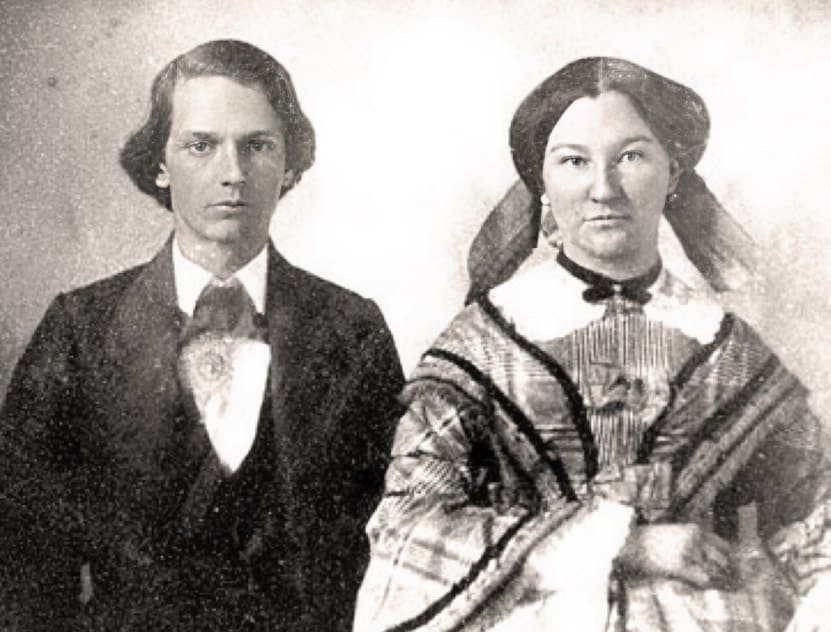
Harriet Timoxena Siler Sloan (1835-1900)
Timoxena, or “Tim” as she was called by her family, was the daughter of early settlers, Jesse Richardson Siler (1793-1870) and Harriet Patton Siler (1798-1877). After attending Asheville Female College, she married William “Billy” Sloan in 1856 and they had seven children. Their home was in the area by the Little Tennessee River near the property originally owned by Na-Ka Rebecca Morris and her husband, Gideon Morris. Salley, an enslaved woman of the Jesse Siler household, is believed to have cared for Timoxena as a child and likely moved with Tim and Billy as they established their own homestead. Timoxena was widowed at age 40 but with her skills and determination, along with Salley’s help, she assumed responsibility for her household. Family lore portrays her as a “plump, whole-souled person with a hearty, infectious laugh, a lover of good company and good food, full of sentiment and never one to speak unkindly of another. Timoxena Sloan’s life was a beautiful example of faith and confidence in Divine guidance.” Strong, frugal, and well-educated, Tim was skilled in the domestic arts and able to make her own medicines.
Timoxena appears twice in the sculpture, once as a young girl on Salley’s hip receiving corn from Na-Ka Rebecca, and again as a grown woman striding into the future. Timoxena’s right hand is on her pregnant belly; her left is clasped with Salley’s. They are connected by time, place, and spirit—enduring the challenges of the moment, but always with hope for the future.
Marker #3 - (Women's History Park)
592 E. Main Street
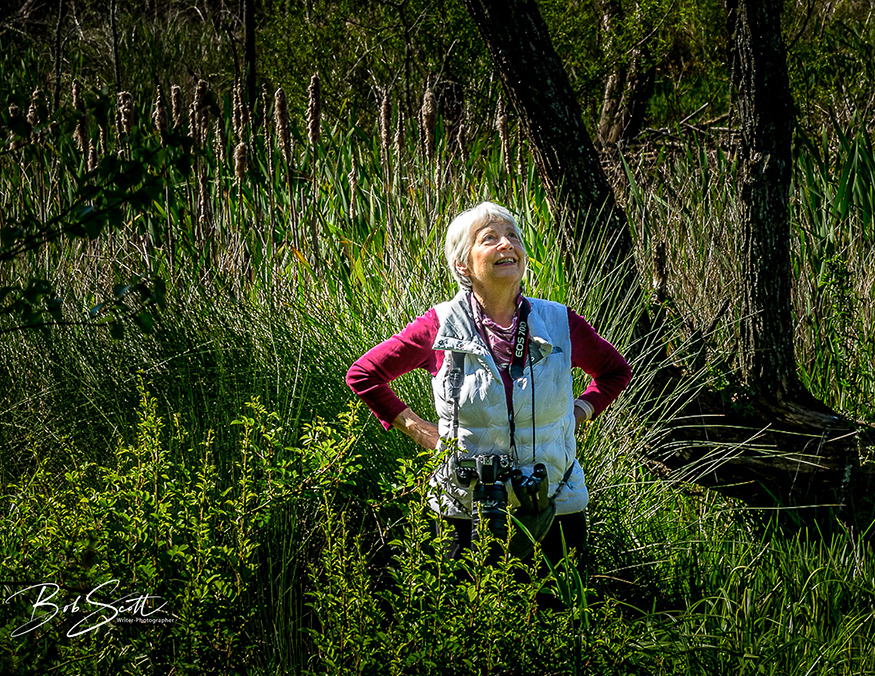
Barbara Sears McRae (1942-2021)
Barbara Sears McRae was a boldly imaginative and quietly effective community leader who played a key role in many significant public projects in Franklin and Macon County, including the Little Tennessee River Greenway, the Macon County Historical Museum, Mainspring Conservation Trust, and the Nikwasi Initiative.
She served as editor of the Franklin Press and vice-mayor of Franklin and was a passionate naturalist and local historian. Barbara was the visionary behind the creation of the Women’s History Trail and the sculpture, "Sowing the Seeds of the Future".
Her aim was to encourage people to walk in the footsteps of some of the remarkable women who made their mark here. She saw how the complex, interconnected stories of these diverse women in the sculpture still resonate today.
Admired, respected, and beloved, Barbara left us these words: “Open your hearts, share your thoughts and ideas, listen to others trust them, and work together.”
Marker #4 - (Women's History Park)
592 E. Main Street
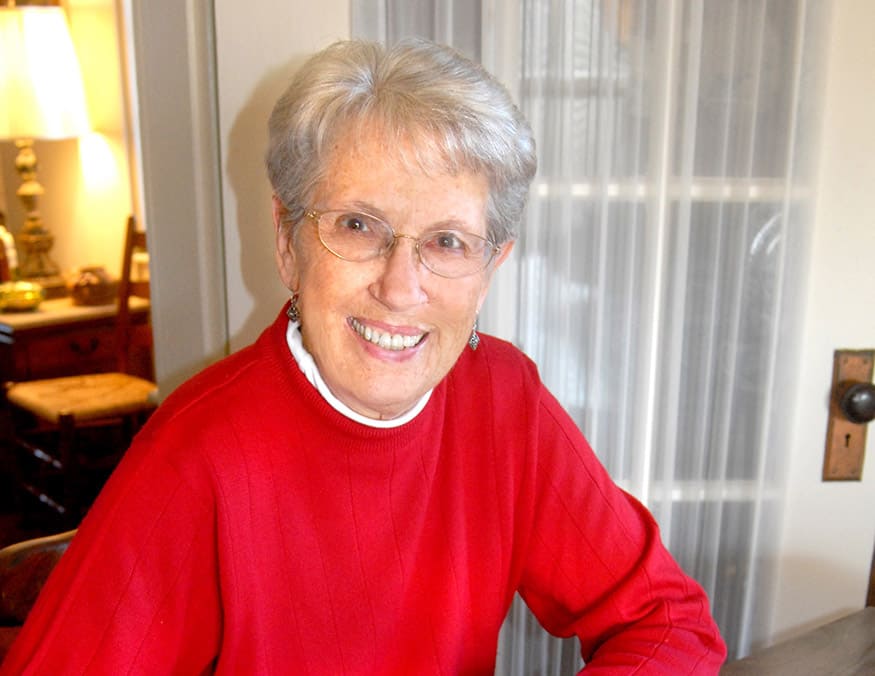
Margaret Setser Ramsey (1931-2018)
Born in the Cartoogechaye community, Margaret was the daughter of Joseph Franklin Setser and Harriet Slagle Setser and is a direct descendant of Jacob Siler, one of the first settlers in this area. Married to Albert L. Ramsey, she partnered in the operation of the family dairy farm, and raised four children (Becky, Diane, Joe, and Ralph). Margaret worked as Outreach Supervisor for Macon Program for Progress and supported local artisans as Manager of Macon Crafts Co-op. Margaret deeply loved the outdoors, fishing, hiking, and sharing stories of these mountains. An avid quilter and seamstress, she worked with others to develop and produce nationally recognized quilt projects such as the Original World’s Largest Quilt. She was an active volunteer with a heart for social justice and received numerous awards for her service. Margaret was an unforgettable voice and champion for the betterment of Macon County. With a life-long passion for preserving local heritage, she helped establish the Franklin Folk Festival. Founding the Folk Heritage Association of Macon County is considered one of her greatest contributions to our community.
Marker #5 - (Women's History Park)
592 E. Main Street
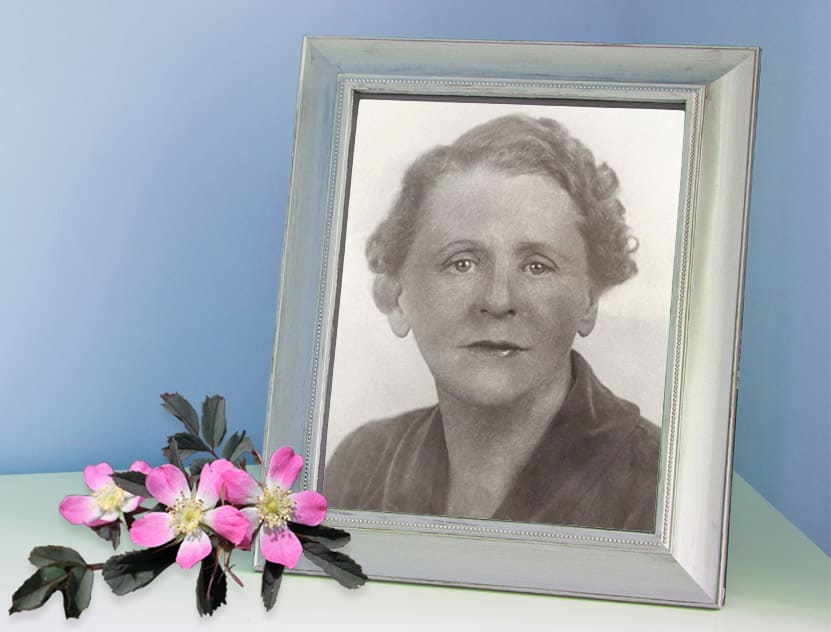
Eloise Potts
After retiring and enduring a second widowhood, Eloise crowned her notable career by winning election as the first female Mayor of Franklin from 1961 to 1963. She is credited with modernizing town government by applying her administrative skills to the office.
"She had good looks, energy and intelligence." - Dr. Furman Angel, remembering Eloise as his favorite teacher.
Marker #6 - (Women in Public Service)
95 E. Main Street
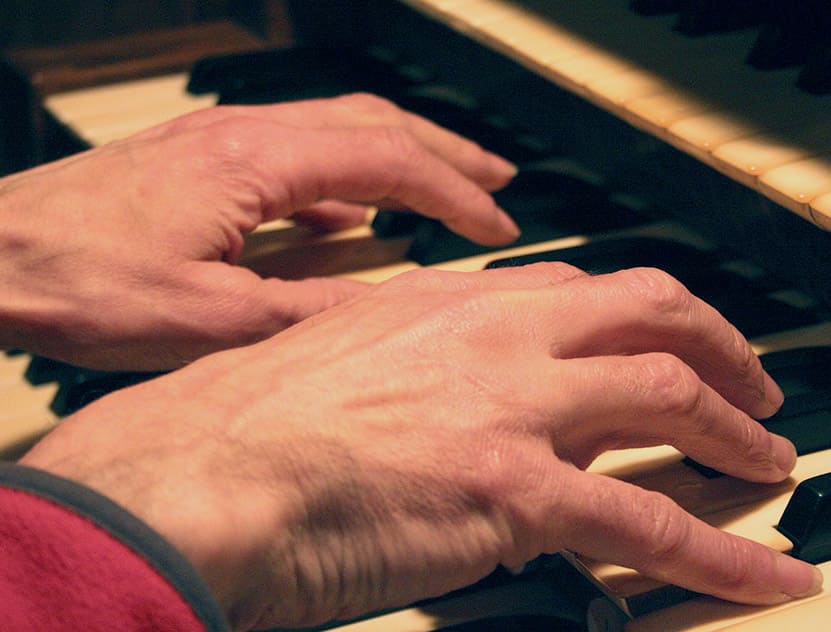
Agnes Zachary Higgins
Silent films were never silent. The music that accompanied the moving pictures was critical for setting the right mood, heightening suspense and drawing in the crowd. At her parents' theater, originally close to this site, Agnes was the woman behind the Wurlitzer. Agnes taught piano to local children who remember her fondly.
Marker #7 - (Musician)
41 Iotla Street
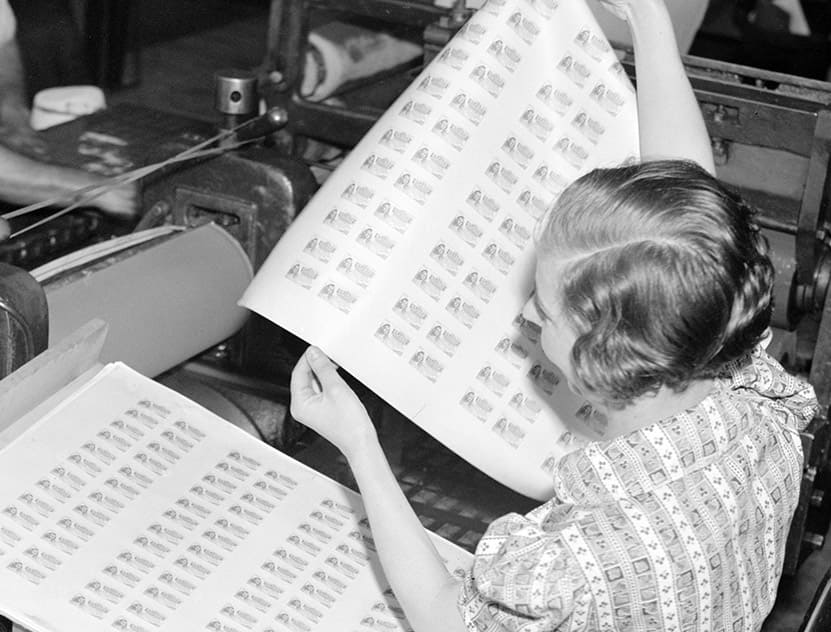
Women in Social Work
The Welfare Department worked with everything involving social work in Macon County. Social programs of Lyndon Johnson's War on Poverty came under its umbrella. When the Food Stamp program began in 1964, staff had to address envelopes, mail out coupons, and even take clients to the store!
Marker #8 - (Corbin Building) - 28 Iotla Street

Nellie Cleveland West Cook
Before marrying for the first time, at age 40, Nellie taught elementary school, ran a restaurant, and was Highland's Postmaster for 12 years. In 1935, she moved to Franklin, where husband Henry West was a grocer. At age 60 she became the first Macon County woman elected to the N.C. House.
Marker #9 - (State Representative)
5 W. Main Street
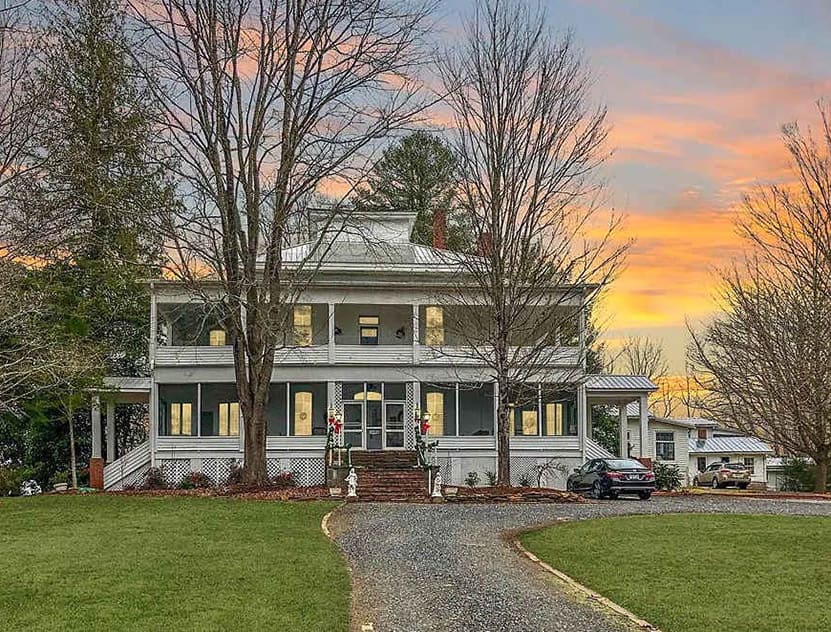
Franklin Terrace Bed and Breakfast
Female entrepreneurs gave a boost to the tourism industry . Neighbors of the Franklin Terrace remembered the "delightful" bridge teas hosted for locals, and the 'fine folks from Atlanta' who arrived on the Tallulah Falls Railroad. In the early 1900's guests paid $6 to $12 per week for their board. The building is also on the National Register of Historic Places.
Marker #10 - (Women in Hospitality)
159 Harrison Avenue
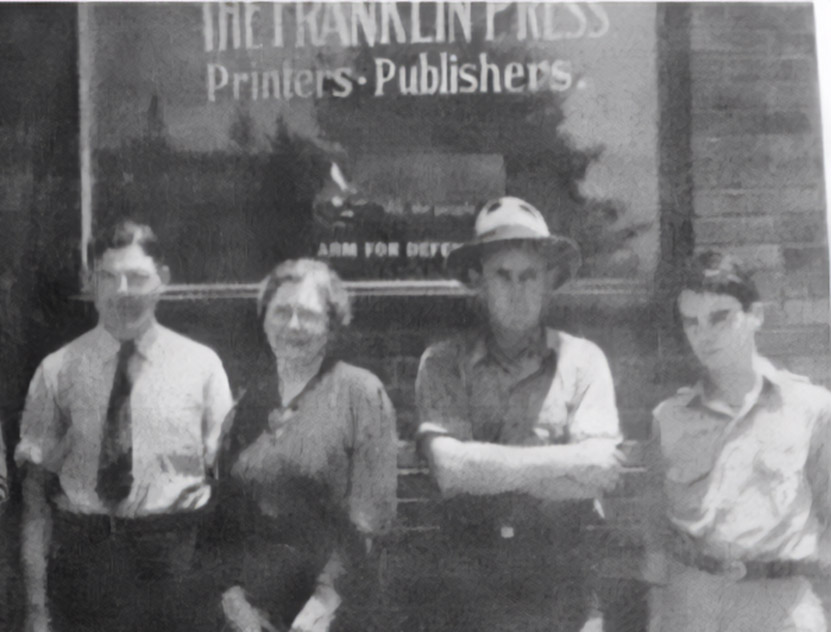
Arrah Belle Wilson Johnson
In 1939, Arrah Belle used her life savings to purchase The Franklin Press and The Highlands Maconian, intending to establish her son as editor. When Blackburn returned to Asheville her other son, William, took his place as editor until military service called him to duty, leaving Arrah Belle in charge. Her role at The Franklin Press was unusual for a woman. American journalism was male-dominated, with women relegated to jobs on the society pages. Arrah Belle was up for the task becoming the first female editor of The Franklin Press.
Marker #11 - (Barbara McRae's Home)
266 Harrison Avenue
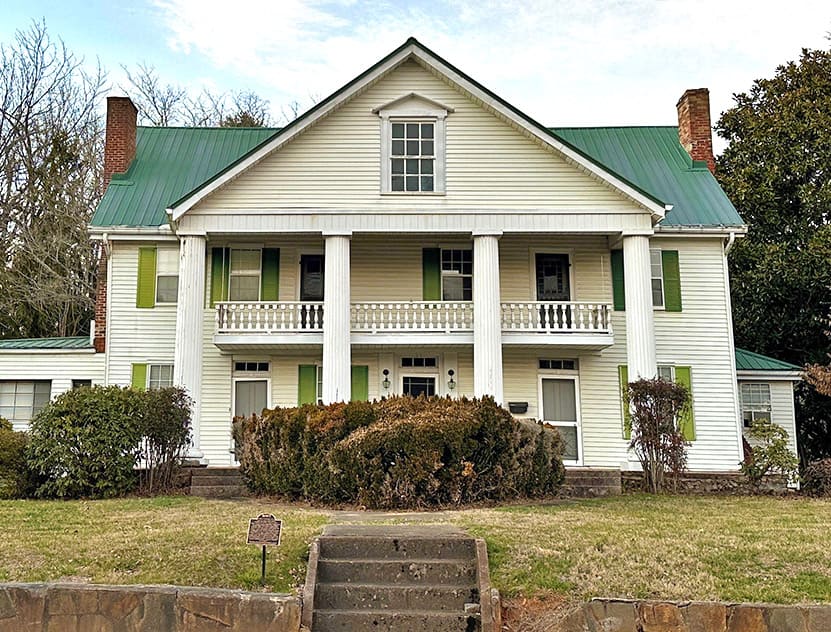
Laura M. Jones
Laura helped raise five younger brothers after their mother's death in 1893. She earned a degree from Columbia University in New York, returning home to teach and later became an assistant principal in Raleigh. She developed a summer camp and a 54 lot subdivision on land she inherited from her father.
Marker #12 - (Teacher/Developer)
291 W. Main Street
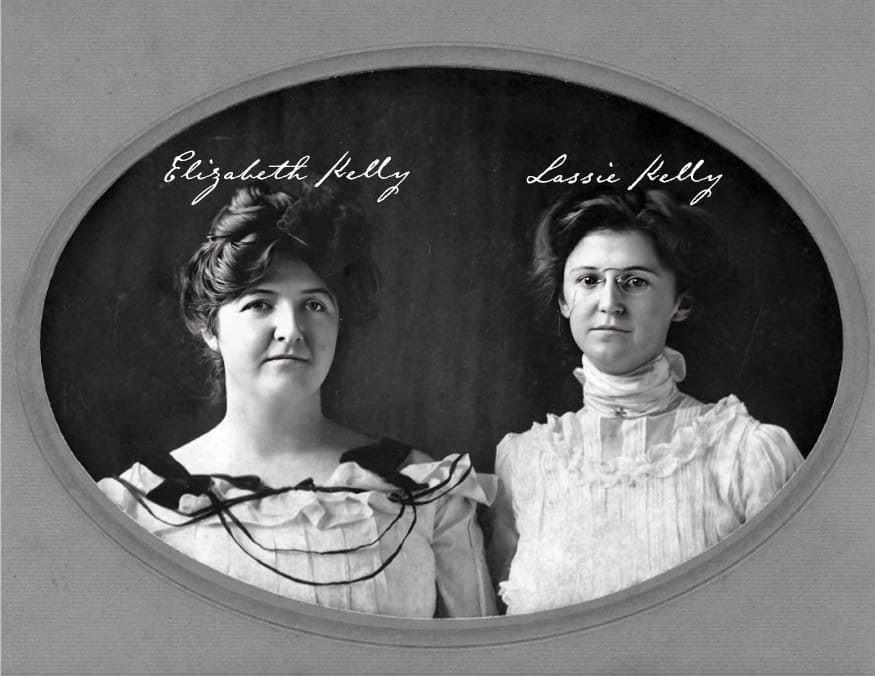
Lassie Kelly
During WWI, Yeoman Lassie Kelly served in the offices of Secretary of the Navy Josephus Daniels, Assistant Secretary Franklin D. Roosevelt, and Admiral Williams Sims. When peace came, she was a charter member of Macon Post 108 and was the first woman in the American Legion's history to become a Post Commander. Earlier, she was one of the first women in North Carolina to pass the bar exam.
Marker #13 - (American Legion)
614 W. Main Street
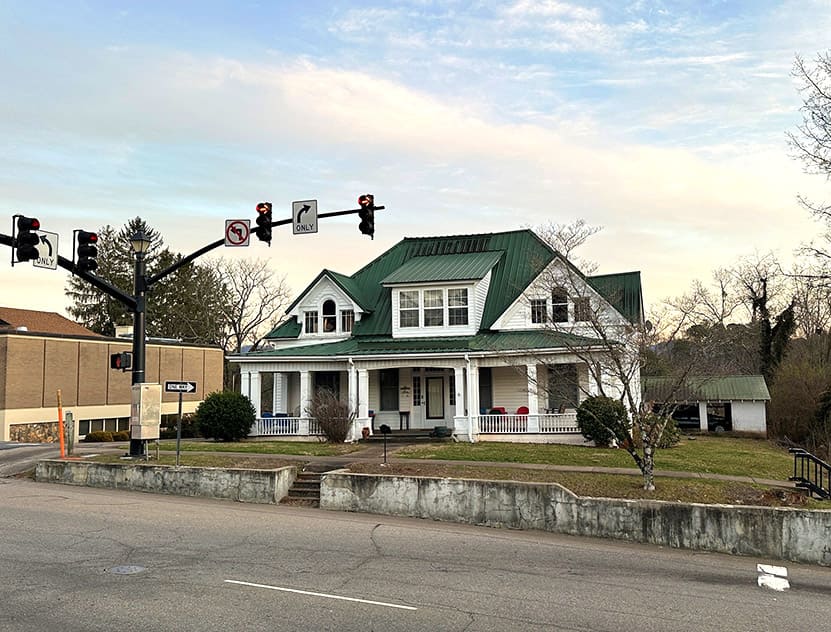
Ruby Dowdle Beshears
At a time when commercial hotels were scarce, travelers appreciated the comfort and convenience a private home could offer - a home away from home for tourists and regular boarders. As her neighbor's inn became overcrowded Ruby began taking on guests of her own. She proved to be a natural in the hospitality business. She approached it like a business, joining the Chamber of Commerce and marketing Beshears Tourist Home with signage, postcards and advertising. She welcomed guests until she neared 100.years of age. The home is now a private residence.
Marker #14 - (Beshears Tourist Home)
124 W. Main Street
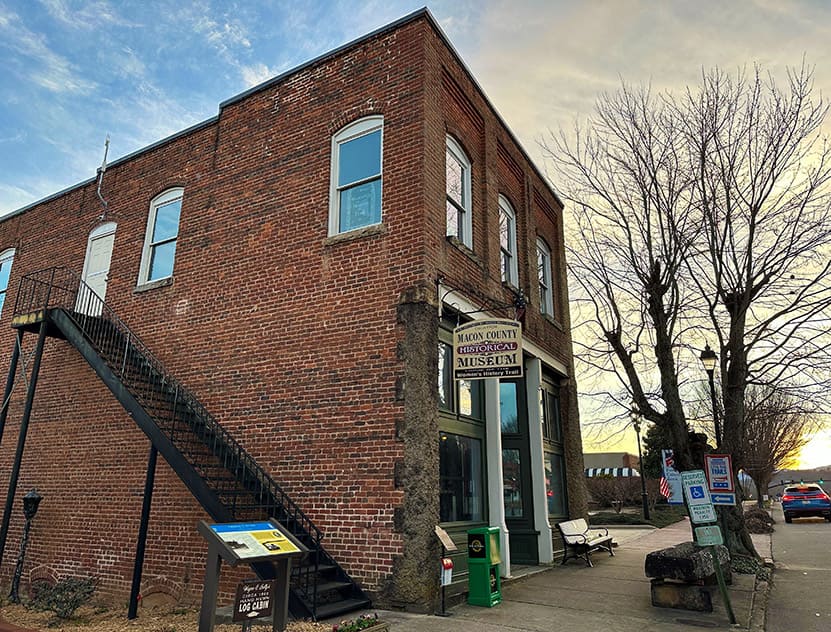
Dess Pendergrass
Dess Bradley Pendergrass earned a degree from Chillicothe Business College in Missouri. She met her future husband, Broadus Pendergrass while working in Franklin for Nantahala National Forest. Most of her married life was spent running the Pendergrass Store which had been a fixture on Main Street since 1904. Generations of customers remembered Dess with fondness for the way she helped them with their purchases. Many recall her expert help when selecting their shoes for school each year. The Pendergrass Building now houses the Macon County Historical Museum. It is also on the National Register of Historic Places.
Marker #15 - (Women in Retail)
36 W. Main Street
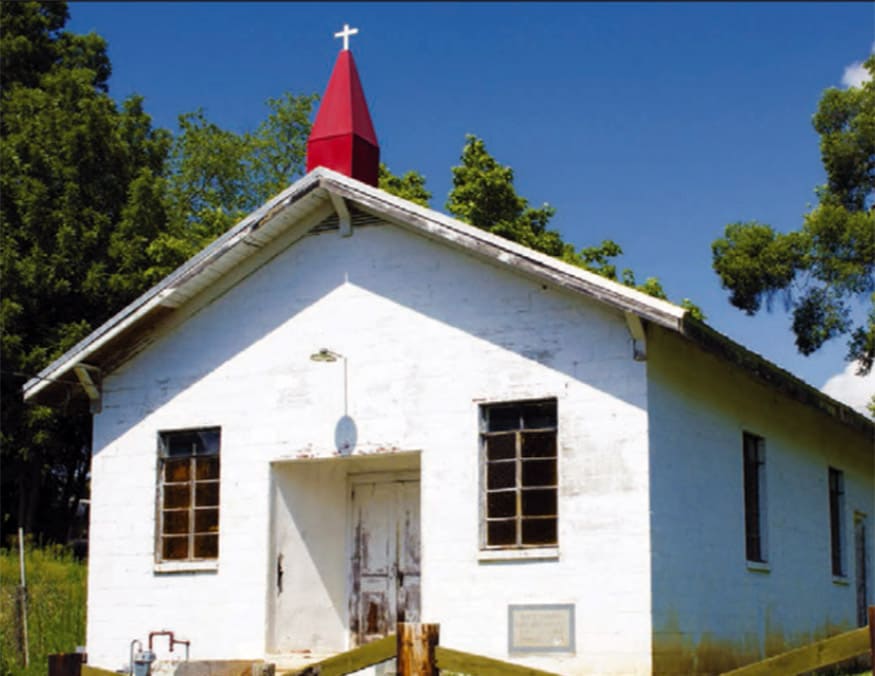
Nan Ray
Nancy Jane Hackett, born in slavery, came to Franklin after the Civil War to attend school at AME Zion Church. She married Matt Ray in 1879. They raised eight children, who were a credit to their parents. Encouraged by AME Zion's progressive policies, Nan became a leader in the church. She was a trustee in 1905, when the church was forced to move. The Rays gave land for a new chapel, named for them (pictured above). In her long life, Nan won the admiration and love of the community for the sterling quality of her character, her kindness, perserverance, and generosity. (Nan Ray • 1860 to 1901)
Marker #16 - (Women of the Church)
36 W. Main Street
Press Photo / Tim Reaves

Original Macon County Public Library
About 1892, young lsabel Elias inspired friends to establish The Library Club. Their small group grew in numbers and strength, propelled by enterprising women who served in every library role. In 1955, their efforts culminated in construction of a library building, at a cost of $10,000. Having a dedicated facility and 14,000 books seemed grand indeed and the building served patrons for more than 20 years.
Marker #17 - 37 Phillips Street
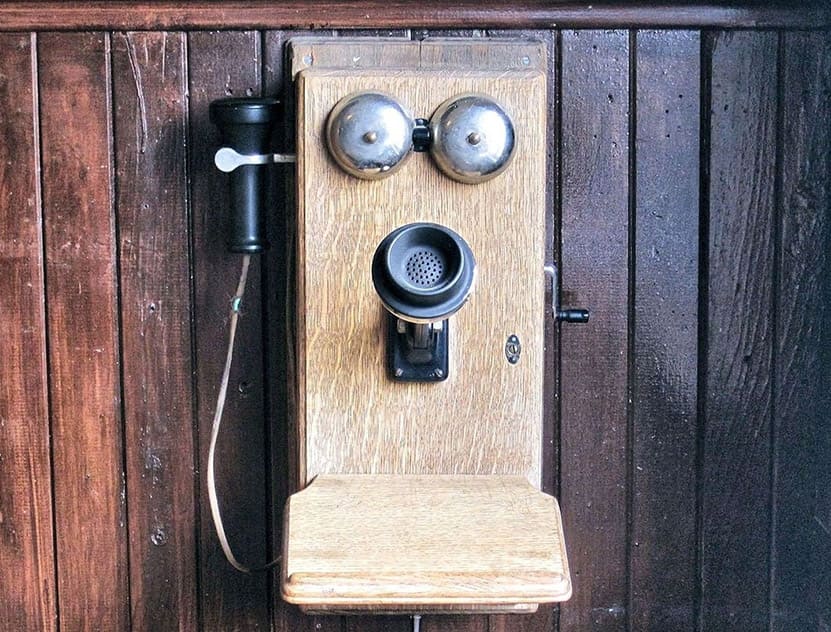
Women Mica Workers
The Western Electric plant offered Franklin residents their first opportunity to work for a giant national corporation with an international reach. The telephones they helped produce created a worldwide revolution in communications. The majority of the plant workers were women who were ideally suited to work in the plant. Their dexterity met the demand for precision work in handling the mica used for the transmitter button.
Marker #18
9 Stewart Street (Bryant Building)
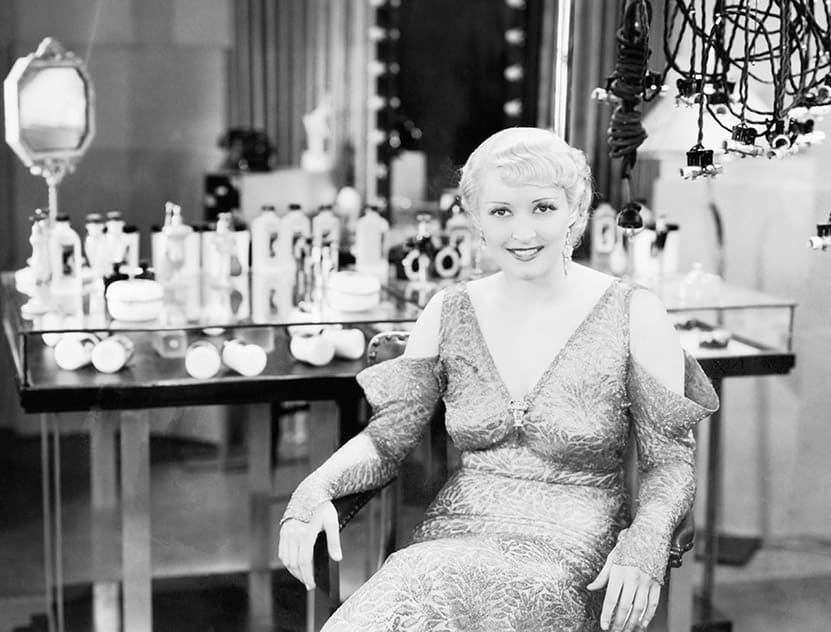
Beauticians • Brave New World of Beauty
'Beautician' entered the language in 1925 and Franklin women soon embraced the field. Maretta Munday opened the first salon in town and established a 'college of beauty culture' here. Within a few years, Macon women had a choice of beauty shoppes. Salons offered respectable work, opportunity for self employment, and a chance to provide indispensable services.
Marker #19 - 16 E. Main Street
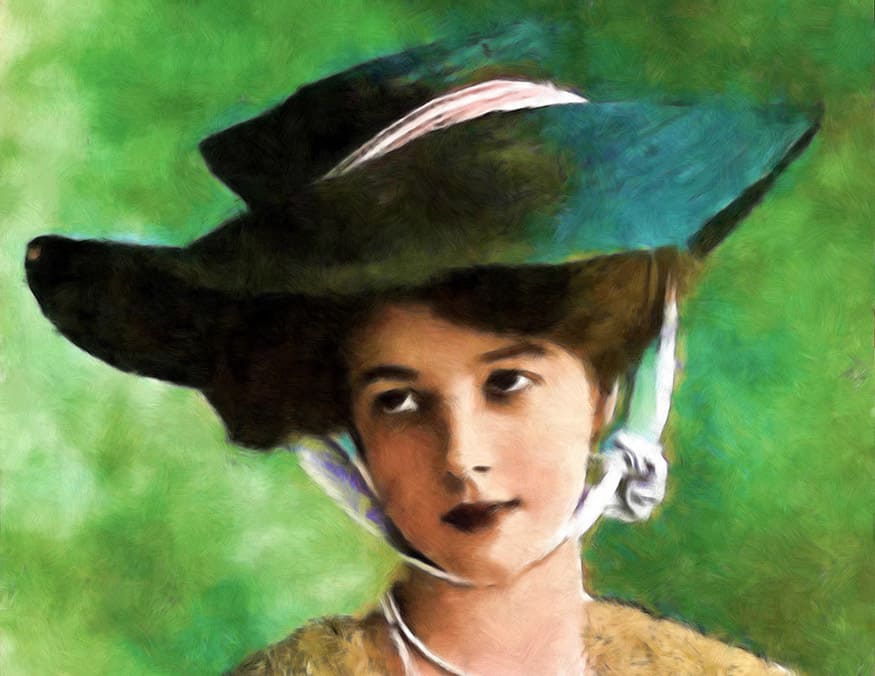
Main Street Milliners
Popular magazines reached into isolated coves, keeping women throughout the county up-to-date on the latest fashions. Demand for the fashions grew, and a group of Franklin women seized the opportunity. Millinery - the art of women's hats - gave them a way to express their creativity and support themselves during their single years. Lily Moore opened a hat shop in the store of her father, J.T. Moore, in his half of the Moore-Benbow Building at this address.
Marker #20 - 76 E. Main Street
